Hello everyone!
The Basilica of Santa Maria della Salute in Venice is a baroque church from the 17th century, which was built as a vote of thanks for liberation from the plague (almost 1/3 of the city's population died in 1630-31). It is located at the eastern beginning of the Grand Canal and is a characteristic building of this city. The church's domes can be seen in the most popular photos from this city, taken mainly from the Ponte dell'Accademia bridge.
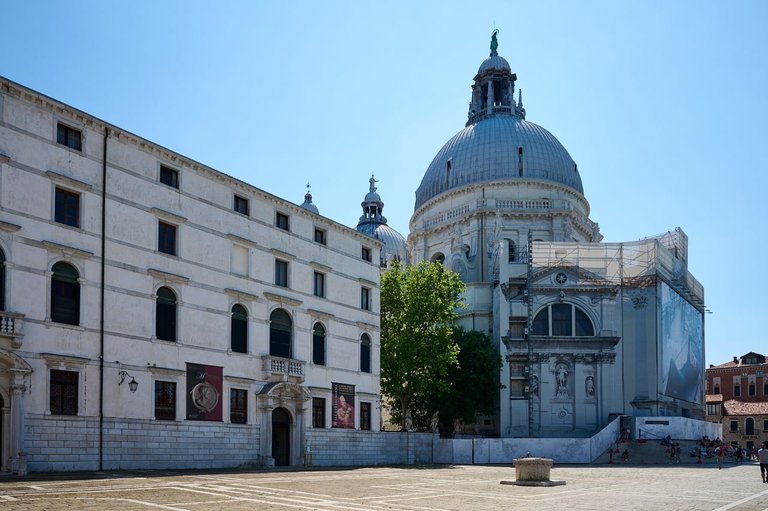
[ PL ]
Witam wszystkich!
Bazylika Santa Maria della Salute w Wenecji to barokowy kościół z XVII wieku, który powstał jako wotum dziękczynne za wyzwolenie od zarazy (w latach 1630-31 zmarło prawie 1/3 ludności miasta). Znajduje się przy wschodnim początku Kanału Grande i jest to charakterystyczna budowla tego miasta. Kopuły kościoła można zobaczyć na najbardziej popularnych zdjęciach z tego miasta wykonywanych głownie z mostu Ponte dell’Accademia.
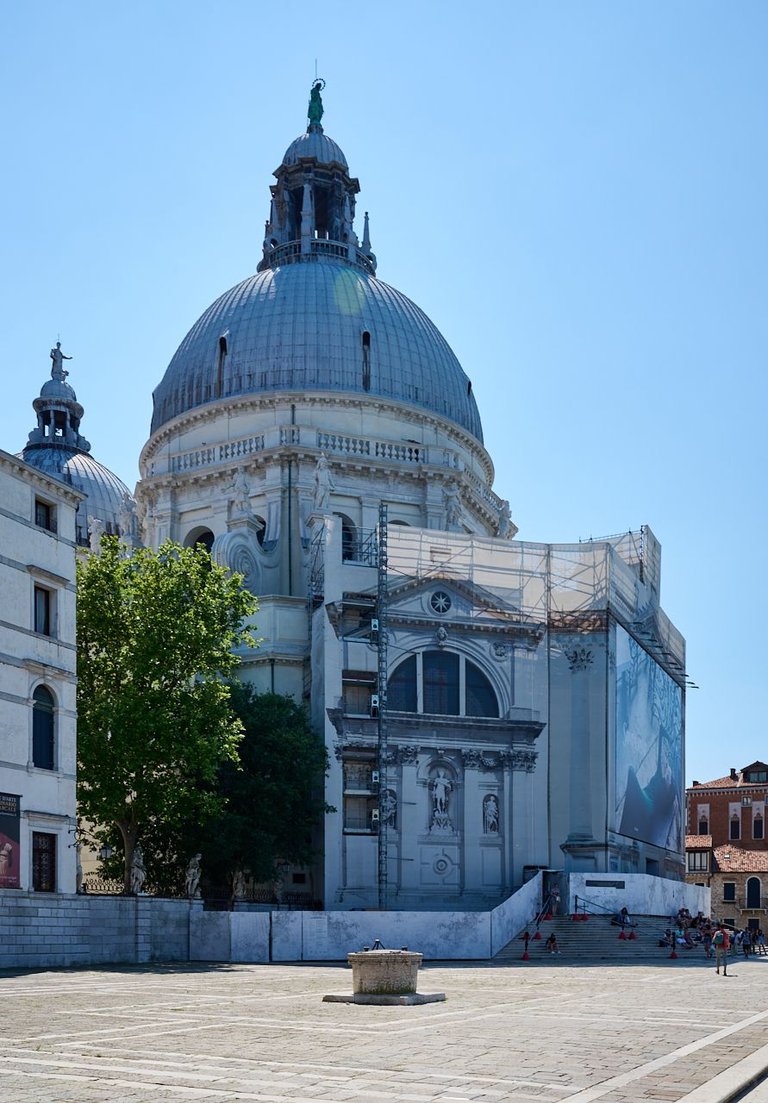 |  |
|---|
At the time I visited Venice, the front of the building was under renovation. Fortunately, despite this, you could get inside.
W okresie, kiedy zwiedzałem Wenecję, front budynku był w remoncie. Na szczęście pomimo tego można było wejść do środka.
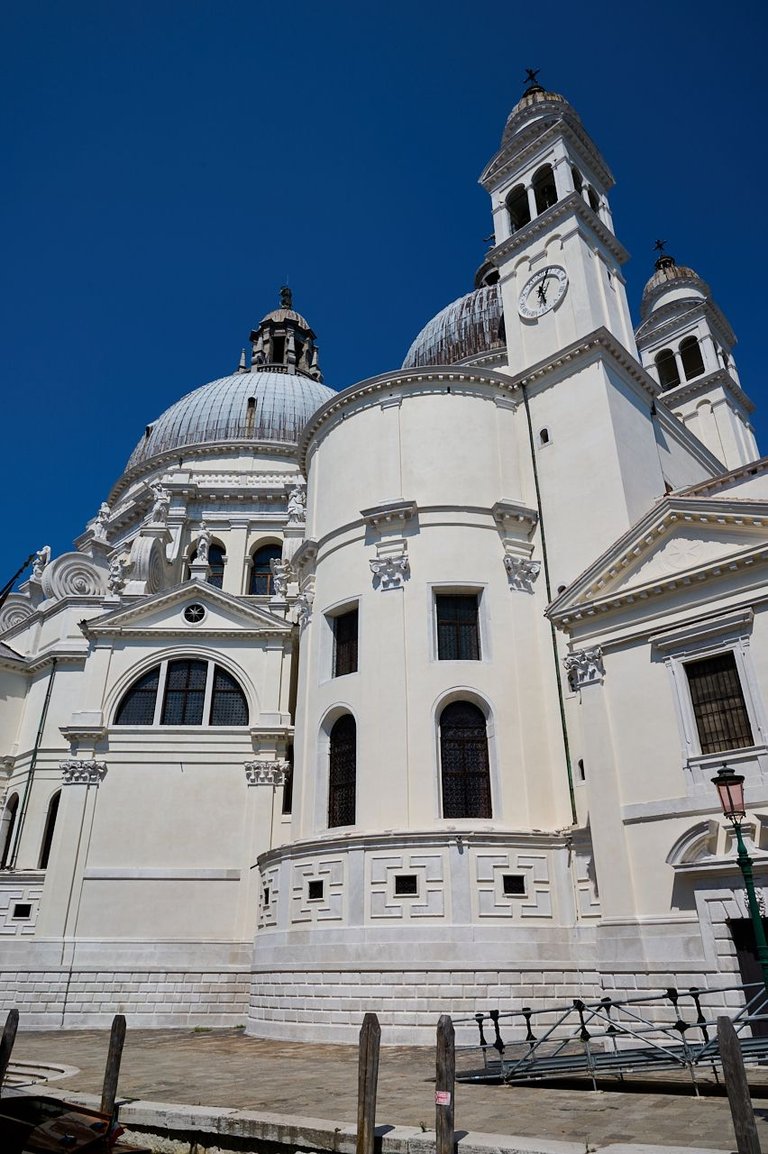 |  |
|---|
However, from the west side you could admire the appearance of the church.
Natomiast od strony zachodniej można było podziwiać wygląd kościoła.

The entire text below describing the interior of the basilica is a translation of the text from the website basilicasalutevenezia.it
Cały poniższy tekst opisujący wnętrze bazyliki to tłumaczenie tekstu pochodzącego ze strony basilicasalutevenezia.it

Vast and bright, the interior consists of the large space of the central dome under which the six side chapels open and the so-called minor rotunda which acts as a true sanctuary with the precious and venerated image of the Madonna della Salute, the Mesopanditissa . In the main rotunda, moving to the right of the main entrance, you can see the altar of the nativity of the Madonna, that of the Assumption and of the presentation of Mary in the Temple. After passing the entrance to the minor rotunda, we find the altar of Pentecost, that of s. Antonio in the center and finally the altar of the Annunciation of Mary.
Ogromne i jasne wnętrze składa się z dużej przestrzeni centralnej kopuły, pod którą otwiera się sześć bocznych kaplic oraz tak zwanej mniejszej rotundy, która pełni funkcję prawdziwego sanktuarium z cennym i czczonym wizerunkiem Madonny della Salute, Mesopanditissa. W głównej rotundzie, na prawo od głównego wejścia, można zobaczyć ołtarze Narodzenia Madonny, Wniebowzięcia i Ofiarowania Maryi w Świątyni. Minąwszy wejście do rotundy mniejszej, odnajdujemy ołtarz Zesłania Ducha Świętego, ołtarz s. Antonio w centrum i wreszcie ołtarz Zwiastowania Najświętszej Maryi Panny.
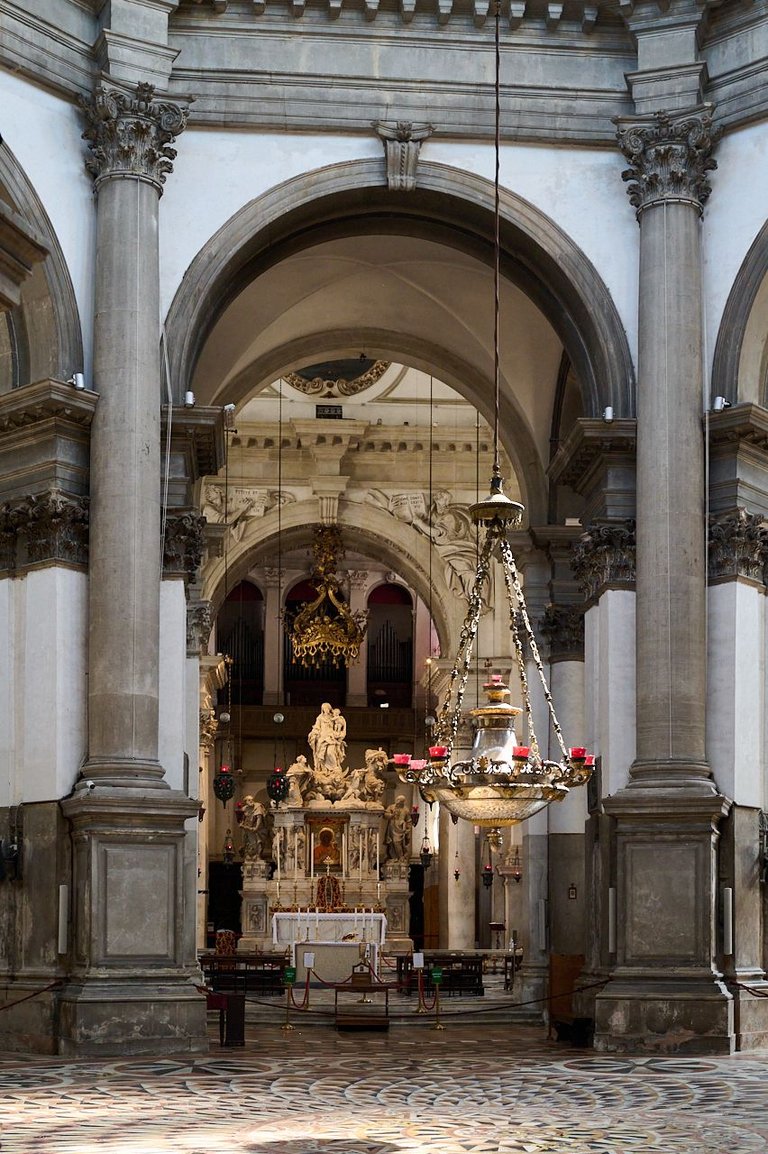
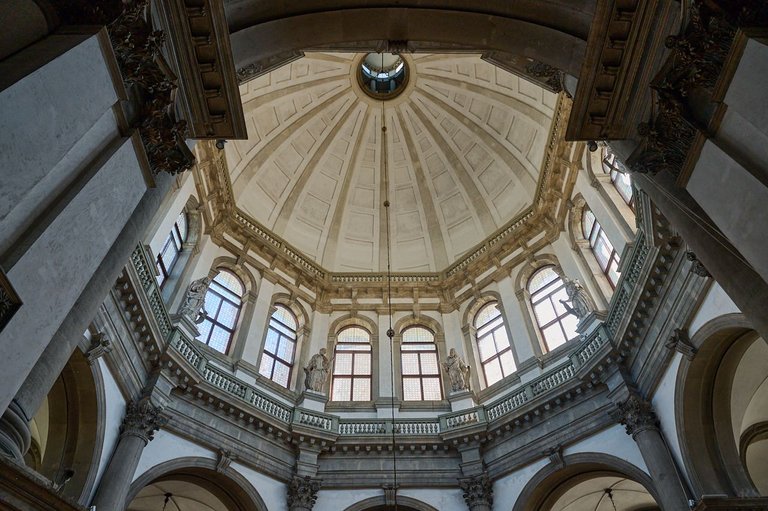

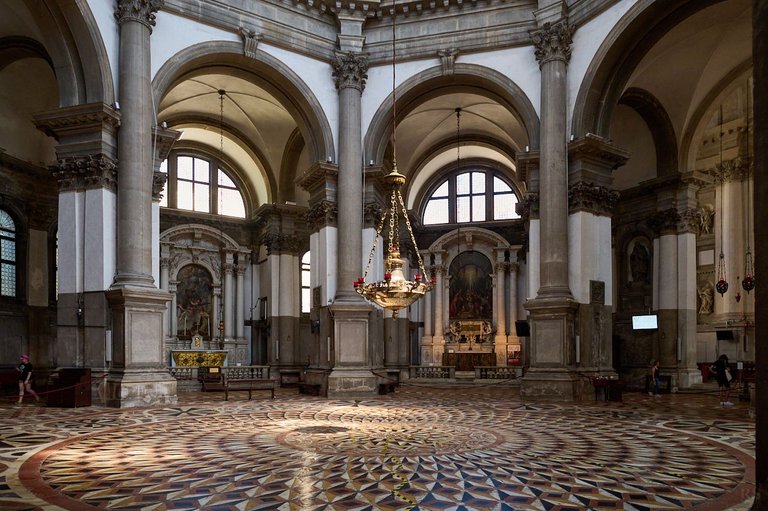
In Longhena's intentions, the minor rotunda constituted the actual chapel or presbytery of the Sanctuary. It is ellipsoidal in shape and almost appears to be a stage with the altar at the back constituting a real focal point for the faithful arriving in the Basilica.
W zamyśle Longheny mniejsza rotunda stanowiła właściwą kaplicę, czyli prezbiterium Sanktuarium. Ma kształt elipsoidalny i przypomina niemal scenę, a ołtarz z tyłu stanowi prawdziwy punkt centralny dla wiernych przybywających do bazyliki.
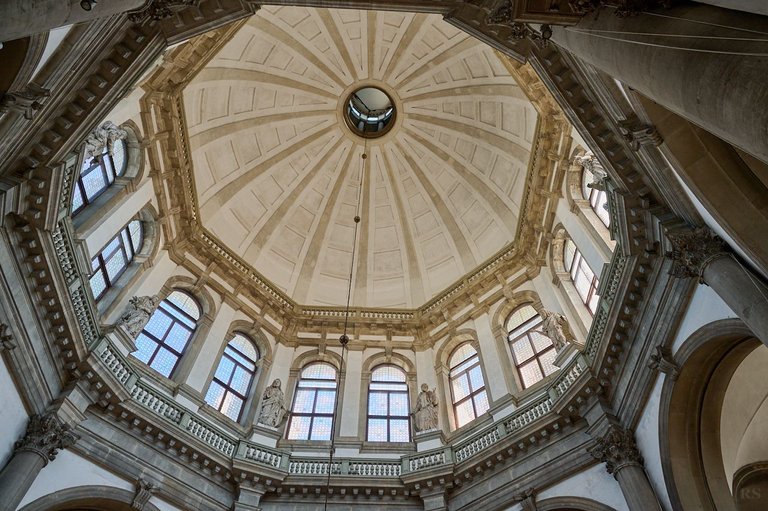
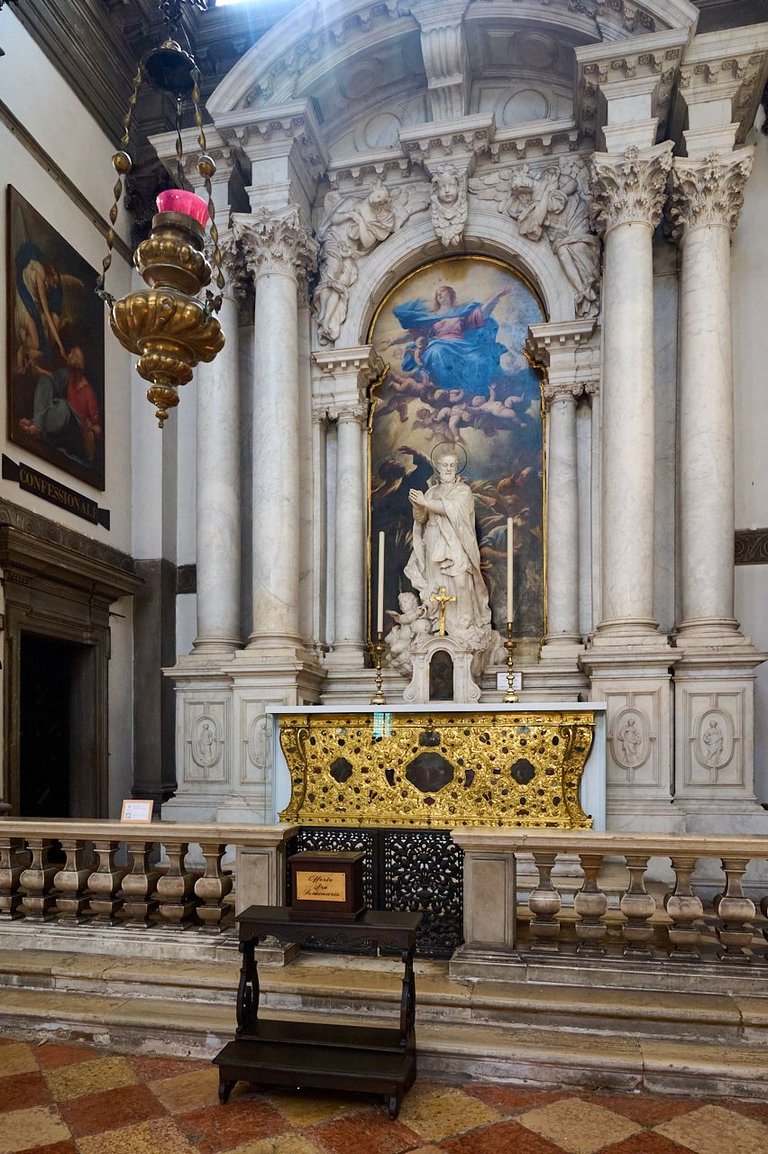
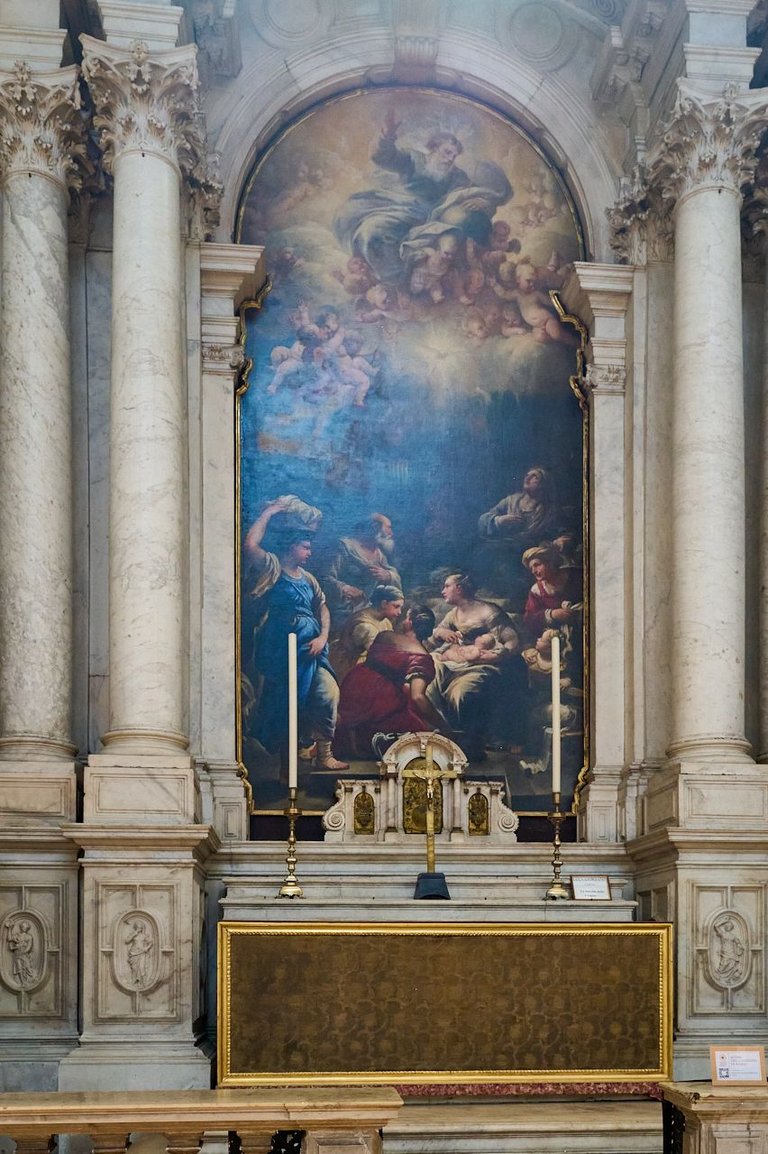
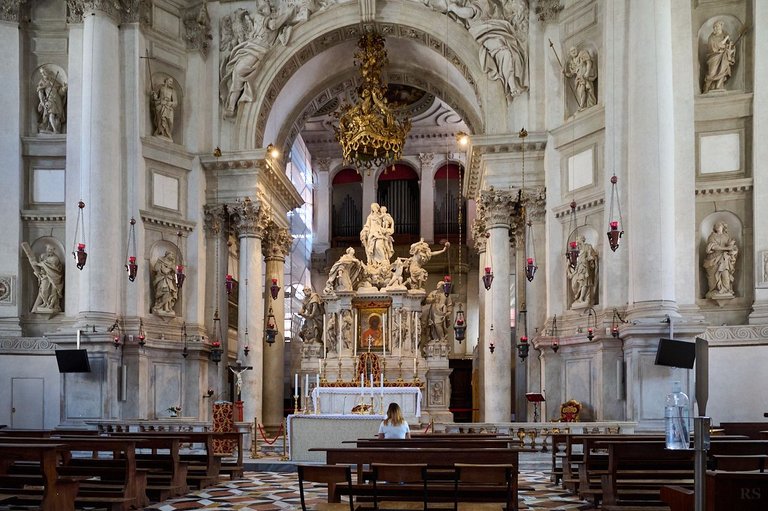
The main altar is striking for its majestic size and for the splendid marble group of Le Court which is located on the top: the Virgin appears as a majestic Lady with the Child in her arms, above a mass of clouds with three angelic puti at her feet; an angel with a torch chases away the plague which flees hastily while a richly adorned woman recalls the city of Venice who is kneeling in supplication at the feet of the Madonna.
Ołtarz główny uderza swoim majestatycznym rozmiarem i wspaniałą marmurową grupą Le Court, która znajduje się na szczycie: Dziewica ukazuje się jako majestatyczna Pani z Dzieciątkiem na rękach, ponad masą chmur z trzema anielskimi puti u Jej boku stopy; anioł z pochodnią przegania szybko uciekającą zarazę, a bogato przyozdobiona kobieta wspomina Wenecję, klęczącą w błaganiu u stóp Madonny.
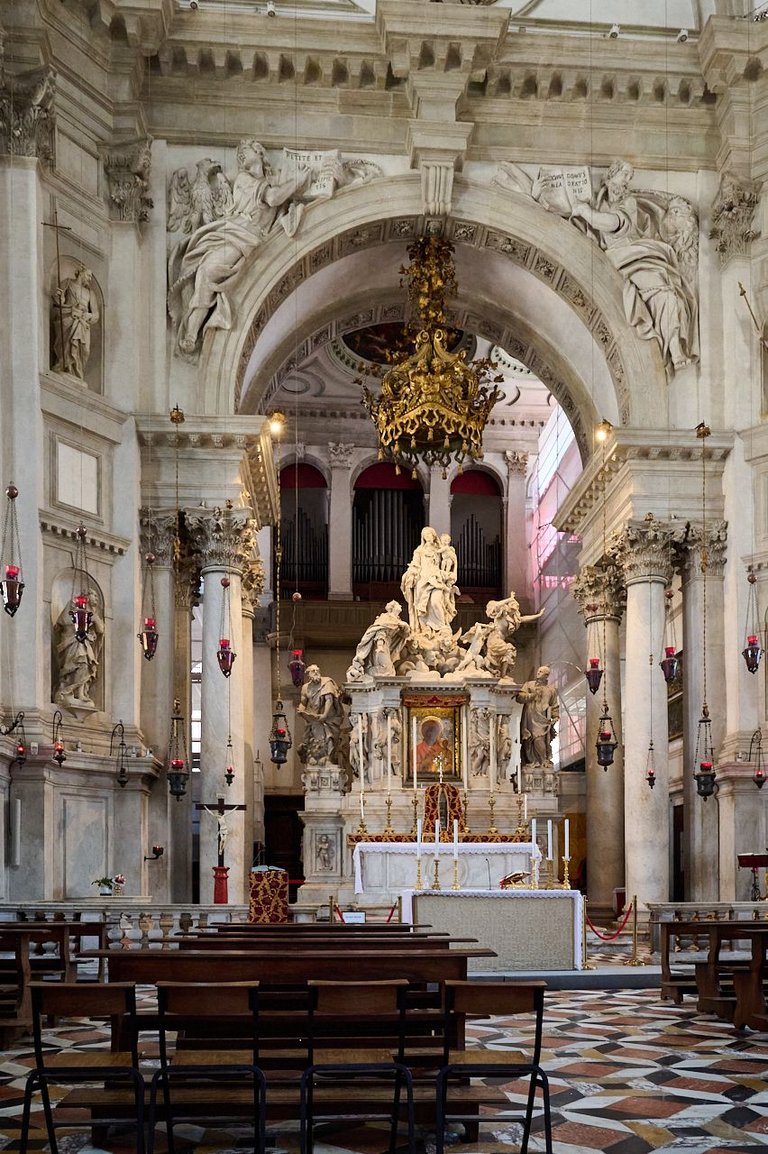
At the center of the altar is the splendid image of the Madonna and Child, the Mesopanditissa, placed here in November 1670. It came from the island of Candia and was brought to Venice by Morosini as a gift at the end of the Candia war. Of the beautiful image, what is striking is the shadowed face and the penetrating eyes that welcome the faithful who come before it as a supplicant.
Pośrodku ołtarza znajduje się wspaniały obraz Madonny z Dzieciątkiem, Mesopanditissa, umieszczony tu w listopadzie 1670 roku. Pochodził z wyspy Kandia i został przywieziony do Wenecji przez Morosiniego jako prezent pod koniec wojny w Kandii. W tym pięknym obrazie uderzająca jest zacieniona twarz i przenikliwe oczy, które witają wiernych, którzy przychodzą przed nim jako suplikanci.
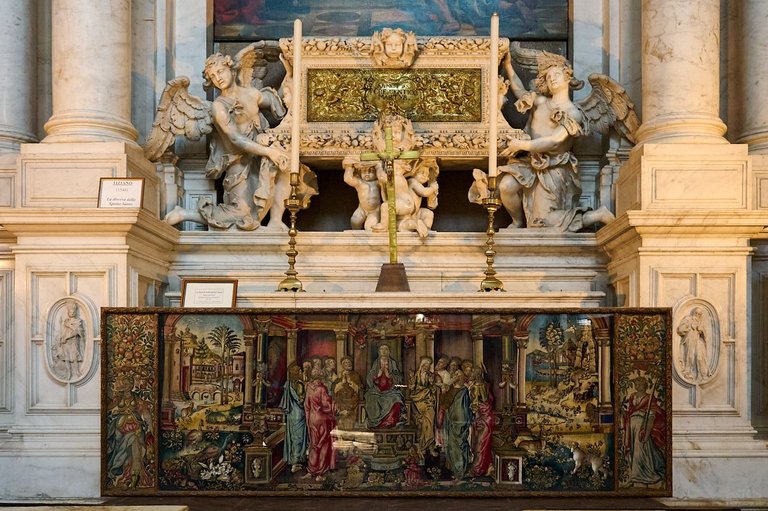
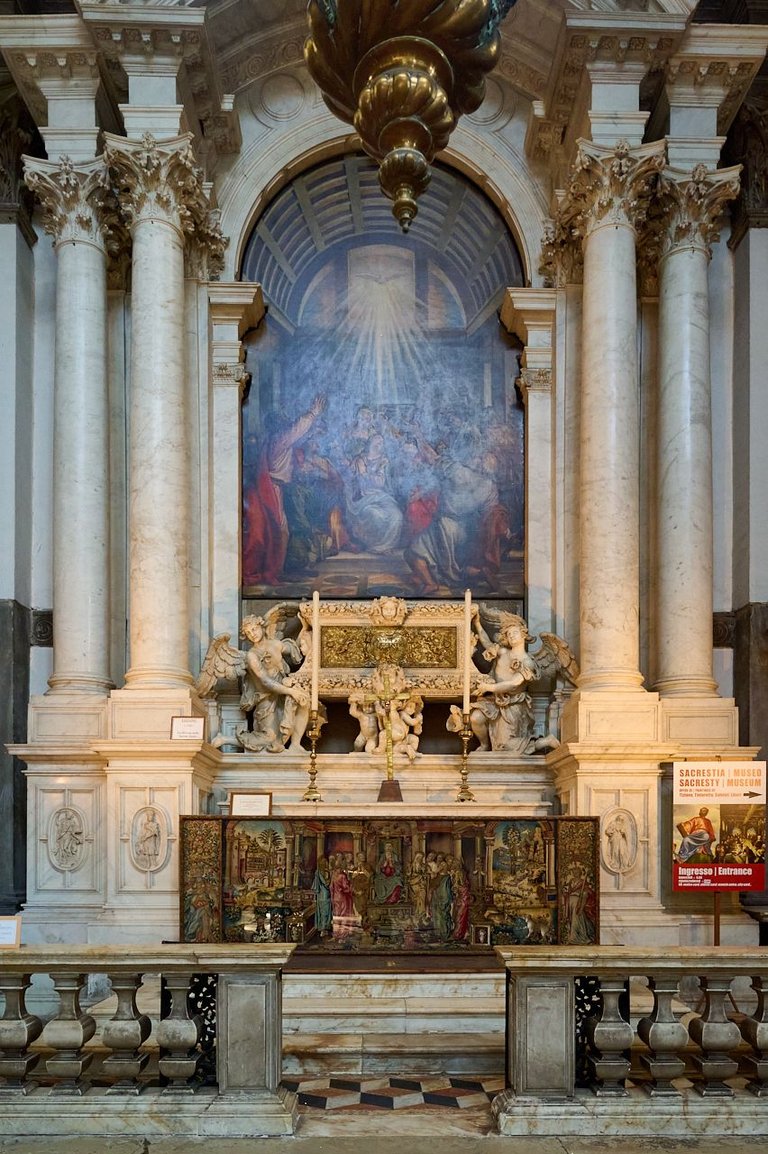
Thanks for your visit and any likes and comments.
Dzięki za wizytę oraz ewentualne polubienia i komentarze.
All photos are my own.
Camera: Nikon Z6II
Lens: Nikkor Z 24-120 f/4
Editing: Capture One
The basilica it's really impressive. I live visiting religious place so I pinned it on my wishlist 💕
pretty good pictures!!
Hello rsphotos!
It's nice to let you know that your article will take 11th place.
Your post is among 15 Bestszejq articles voted 7 days ago by the @hive-lu | King Lucoin Curator by
You receive 🎖 0.5 unique LUBEST tokens as a reward. You can support Lu world and your curator, then he and you will receive 10x more of the winning token. There is a buyout offer waiting for him on the stock exchange. All you need to do is reblog Daily Report 297 with your winnings.
Buy Lu on the Hive-Engine exchange | World of Lu created by szejq (Lucoin) and get paid. With 50 Lu in your wallet, you also become the curator of the @hive-lu which follows your upvote.
STOPor to resume write a wordSTART